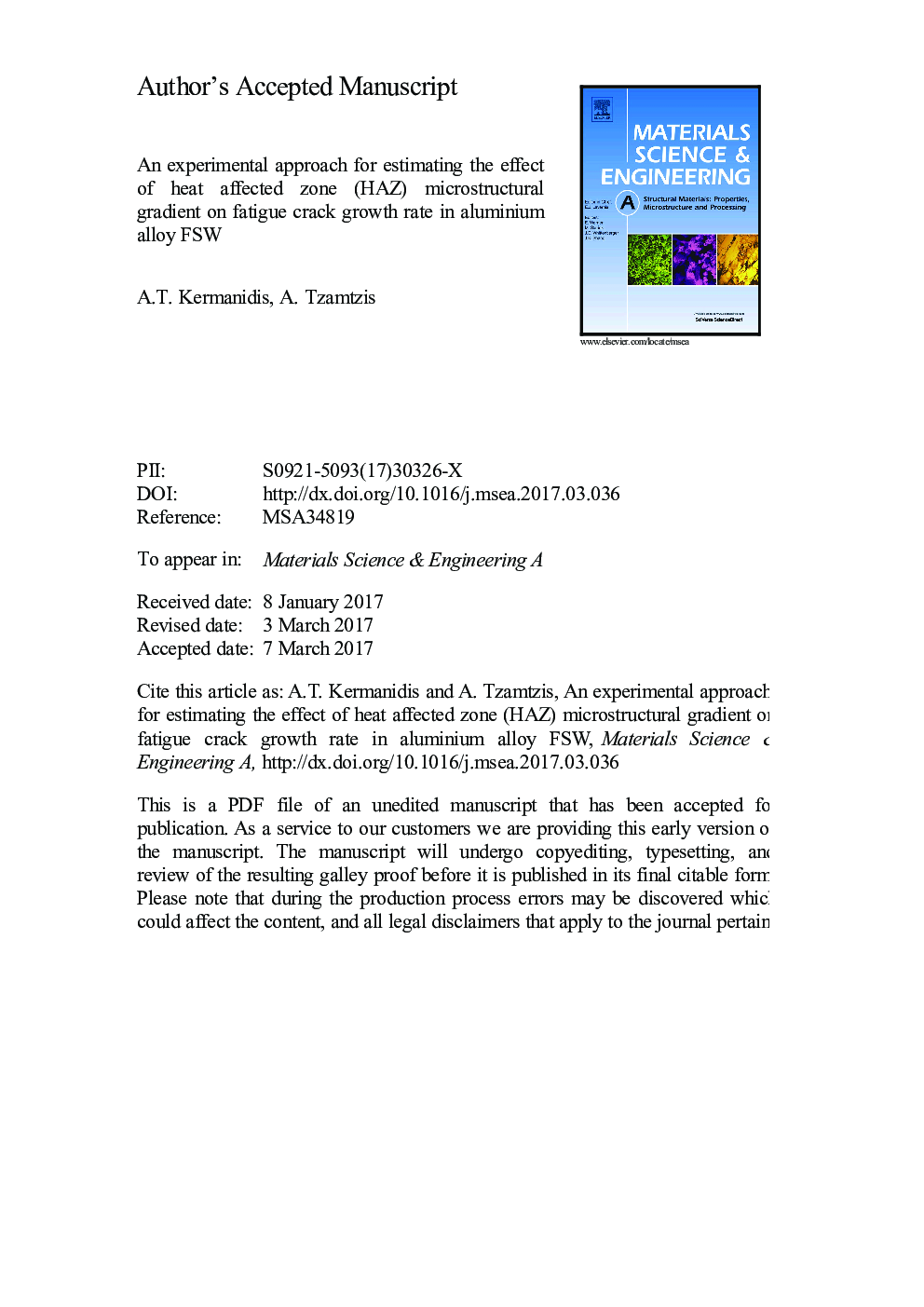| Article ID | Journal | Published Year | Pages | File Type |
|---|---|---|---|---|
| 5455908 | Materials Science and Engineering: A | 2017 | 39 Pages |
Abstract
The microstructural gradient of the heat affected zone (HAZ) in aluminum alloy FSW has been simulated experimentally by subjecting the parent alloy to a controlled aging process. The purpose of the simulation is to estimate the effect of the HAZ microstructural gradient on fatigue crack propagation rate by excluding the effect of weld residual stresses. The microstructure in the gradient material produced by aging was evaluated against the actual FSW heat affected zone by comparing microstructural features and microhardness variation. Fatigue crack growth tests were conducted on the gradient material to evaluate its influence on crack propagation rate. The results showed that the gradient has a negative influence on fatigue crack propagation rate, accelerating crack growth with regard to the conditions at onset of the gradient. The impact on crack growth rate is dependent on the slope of the gradient with regard to the direction of fatigue crack propagation. The results of the study suggest that independent from the effect of weld residual stresses the micostructural influence in fatigue crack growth analysis of welded joints should not be neglected.
Related Topics
Physical Sciences and Engineering
Materials Science
Materials Science (General)
Authors
A.T. Kermanidis, A. Tzamtzis,
